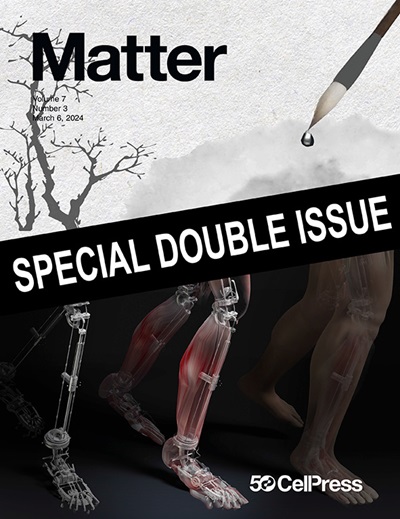液-固-气三相界面因接触通电而产生静电击穿
IF 17.5
1区 材料科学
Q1 MATERIALS SCIENCE, MULTIDISCIPLINARY
引用次数: 0
摘要
水-固界面上的电作用增强了界面的物理和化学反应,在能量领域中起着至关重要的作用。然而,由于接触电气化(CE)在这些界面上的电荷转移的基本限制仍然知之甚少。在这里,我们首先证明了液-固-气界面附近的静电击穿(EB),这是由于靠近三相接触线的气体中的电场增强所致。此外,我们发现远处导体对界面电场的显著影响取决于它们的位置和接地状态,并观察到两种类型的击穿。在已建立的击穿物理模型的指导下,我们在水-绝缘子界面的CE中实现了创纪录的1.36 mC m−2的高电荷密度。最后,我们展示了EB对能量收集、表面润湿性和水-绝缘体界面液滴运动的广泛影响。这种以前未被发现的EB现象可以为水-固界面的界面电荷和能量交换提供新的见解。本文章由计算机程序翻译,如有差异,请以英文原文为准。


Electrostatic breakdown at liquid-solid-gas triple-phase interfaces owing to contact electrification
Electrification at water-solid interfaces, which enhances interfacial physical and chemical reactions, plays a crucial role in energy fields. However, the fundamental limits on charge transfer due to contact electrification (CE) at these interfaces remain poorly understood. Here, we first demonstrate electrostatic breakdown (EB) in the vicinity of liquid-solid-gas interfaces, which is attributed to the enhanced electric field in the gas close to the triple-phase contact line. Furthermore, we discover the significant impact of distant conductors on the interface electric field depending on their locations and grounding statuses and observe two types of breakdowns. Guided by an established physical model of breakdown, we achieve a record-high charge density of 1.36 mC m−2 in CE at water-insulator interfaces. Finally, we show the broad impact of EB on energy harvesting, surface wettability, and droplet motion at water-insulator interfaces. This previously unexplored EB phenomenon could offer new insights into interfacial charge and energy exchange at water-solid interfaces.
求助全文
通过发布文献求助,成功后即可免费获取论文全文。
去求助
来源期刊

Matter
MATERIALS SCIENCE, MULTIDISCIPLINARY-
CiteScore
26.30
自引率
2.60%
发文量
367
期刊介绍:
Matter, a monthly journal affiliated with Cell, spans the broad field of materials science from nano to macro levels,covering fundamentals to applications. Embracing groundbreaking technologies,it includes full-length research articles,reviews, perspectives,previews, opinions, personnel stories, and general editorial content.
Matter aims to be the primary resource for researchers in academia and industry, inspiring the next generation of materials scientists.
 求助内容:
求助内容: 应助结果提醒方式:
应助结果提醒方式:


